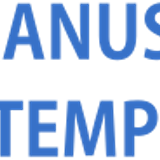BIOREMEDIATION OF CRUDE OIL CONTAMINATED SEAWATER WITH THE APPLICATION OF BIOSURFACTANT AND BIOSTIMULATION
Abstract
Petroleum is one of the pollutant sources that can be found in the oceans and has a negative impact on
the marine ecosystem. Special conditions are needed to reduce the pollutant, one of the processes that occurs
is biodegradation, which is the process of degradation of petroleum hydrocarbon components by the activity
of microorganisms so that the marine ecosystem returns to normal. Remediation of seawater contaminated
with petroleum through the application of biosurfactants and biostimulation is one way to increase the
effectiveness of petroleum biodegradation. To examine these aspects laboratory-scale experiments were
carried out using basic seawater media which added oil pollutants. There are four treatments: P0 (basic
media without the addition of biosurfactant and nutrients), P1 (addition of biosurfactant), P2 (addition
of biosurfactant and nutrients), and P3 (addition of nutrients). The results of observations for 21 days
of incubation showed that the addition of biosurfactant treatment did not show a signifi cant increase
110
in biodegradation. Signifi cant increase in biodegradation occurs in the treatment with the addition of
biostimulants and more degradation if biostimulation is combined with biosurfactant.
Keywords
Full Text:
PDFDOI: https://doi.org/10.29017/SCOG.41.2.340

This work is licensed under a Creative Commons Attribution-NonCommercial-NoDerivatives 4.0 International License.






